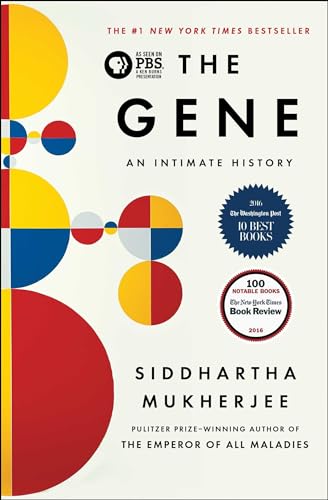Normally, I wait to finish a book before I do a review. But I'm midway through "The Gene" by Siddhartha Mukherjee, a book that is both long and densely packed with information, and if I wait until the end to write my review, I'll have forgotten everything I wanted to say about the first half.
So, I'll review the first 235 pages now, the rest later.
I had feared this would be dry science book, but "The Gene" is impressively readable, largely because Mukherjee focuses on the people at each stage of the story. He engages us in the lives of scientists, researchers and theorists struggling and competing to understand the secrets of heredity and genetics.
That said, this 2016 book is a slow read. This is partly because Mukherjee fills each page — each sentence, really — with important details. I don't want to rush through and miss something.
Mukherjee builds the book in steps, starting with a section on primitive ideas about genetics (some people once thought that an entire miniature human was inside every sperm), moving to Charles Darwin's breakthrough model of evolution, then to Gregor Mendel's landmark research on heredity. From there we see scientists developing the first models the gene.
It isn't all about the triumph of science. Mukherjee outlines the disturbing growth of the eugenics movement, which resulted in horrific practices by the Nazis and others,.
The author notes that DNA was considered a "stupid molecule" with a little value until the 1940s, when, by process of elimination, scientists realized that it was where genes were stored. He then describes the race by James Watson, Francis Crick and Rosalind Franklin to determine the structure of DNA, an intense competition that ended with the discovery of the double helix.
At each step, news issues and mysteries arose. Research on DNA soon led to ethical and moral questions about the potential to alter genes and transfer them between species.
Mukherjee describes a point in 1973 where scientists in a California lab quietly took the first step to mix genetic material between two organisms. "The birth of a new world was announced with no more noise than the mechanical tick-tick-tick of a bacterial incubator rocking through the night."
While I give Mukherjee much credit for making a daunting topic readable, the lack of continuing characters keeps the book from being compelling. You can get engaged with characters of the moment, but they will be gone in a chapter or two. Each section stands on its own.
I also have a couple small quibbles. First, Mukherjee tries to frame the whole story by periodically describing the mental health issues of members of his own extended family. Frankly, it just doesn't work; there's not enough connection. Still, these sections are short and you can easily skip them.
I also wish the author would do more to describe the literal work of the scientists. He writes about "splicing," "splitting," and even "snapping" proteins and genes, but as a layman, I'd like to know, in real terms, how is that actually done?

No comments:
Post a Comment